Affiliate links on Android Authority may earn us a commission. Learn more.
Samsung Galaxy Note 20 Ultra one year later: Is it still worth buying?

Samsung’s 2021 has seen mixed fortunes at first glance, with the Galaxy S21 series delivering cheaper price tags across the board but reportedly seeing lower sales. The company has also launched new cutting-edge foldables in the Galaxy Z Fold 3 and Galaxy Z Flip 3, although it’s too early to say whether these are a commercial success yet.
One thing we aren’t seeing in 2021 is a new Galaxy Note flagship, as Samsung confirmed earlier this year that this wouldn’t be the case. Instead, those looking for that Note-like experience are being pointed in the direction of the Galaxy S21 Ultra and Galaxy Z Fold 3, with both now offering S Pen support.
There is one other option though, and that’s last year’s Galaxy Note 20 Ultra. Samsung’s Note series is traditionally more than just an S Pen, as it’s also been one of the best phones for power users. So, as the most recent Galaxy Note phone on the market, how does the phone fare a year after its release? That’s what we’re looking at in our Samsung Galaxy Note 20 Ultra long-term review.
Samsung Galaxy Note 20 Ultra review recap
Before we carry on with our long-term review, now’s as good a time as any to look back at what we thought of the phone at launch. You can read the full review over here and watch our video above. You can also check out our six month revisit for the phone here.
How has the Galaxy Note 20 Ultra aged?
The Galaxy Note 20 Ultra was among the most feature-packed phones of 2020, and time has mostly been kind to it. There’s that slick 120Hz QHD+ OLED screen, a solid Exynos 990 SoC (or Snapdragon 865 Plus in the US and China), 8/12GB of RAM, 128/256/512GB of storage, and a 4,500mAh battery. In other words, the core specs keep this phone respectable a year later.
It’s also worth noting that the Note 20 Ultra packs a microSD card slot, which isn’t present on the Galaxy S21 series. This is a major selling point for those who want the most local storage possible and those who lamented its loss on Samsung’s 2021 flagships.
Another point in the phone’s favor is that Samsung is promising three major OS updates for the device. The phone launched with Android 10 and received an upgrade to Android 11 thereafter, which means you can expect Android 12 and Android 13 at the very least. Toss in four years of security patches and the Note 20 Ultra should age better than other devices from a software perspective.
Moving to basic performance, our review unit contains the Exynos 990, and it generally kept things running without a hitch. While there was some controversy about the processor at launch, between multitasking, web browsing, and launching apps, everyday usage was a smooth experience. In fact, the only time I really saw any major lag outside of games was in the first few minutes after restarting the device. There’s also a delay of about two seconds between snapping 108MP shots, but this is understandable given the sheer amount of data being processed at that point.
Check out: The best Samsung phones
Gaming is a far tougher test of a phone’s internals, and the Note 20 Ultra is a mostly smooth experience. One of my go-to titles for pushing a phone is Nascar Heat Mobile, owing to the huge number of cars on track at once, but things ran at a very fluid pace. We also tried out Call of Duty Mobile and Genshin Impact, with the former running very smoothly. Genshin Impact was perfectly playable too but was prone to slow down at times, especially when simply swiping the camera around.
Another great test of a phone’s capabilities is emulation, and we ran games like Metroid Prime and F-Zero GX via the Dolphin emulator and its default settings. Unfortunately, the former offered an extremely erratic experience, briefly grinding to a halt at times. The latter game also saw some stutter as well, although it seems to be a slightly more consistent experience. We tested these games on the Snapdragon 865-toting LG V60 (another great phone from 2020) and they both ran at a much smoother, more consistent pace with out-of-the-box settings.
The Galaxy Note 20 Ultra isn't the best choice for gaming if you've got the Exynos 990 variant.
Our own Eric Zeman noted that his Snapdragon unit ran hot in his review, but I haven’t felt this to be the case at all with the Exynos variant during my gaming sessions. I’m not sure whether this is due to the chipset difference itself, the fact that some models have different cooling systems, or system updates by Samsung. Nevertheless, we’d definitely suggest you get the Snapdragon 865 Plus variant if you intend to play technically demanding games and emulators on the Note 20 Ultra.
Performance doesn’t mean much without battery life, and another one of Eric’s gripes in his original review was the middling endurance. A period of some relatively heavy usage (YouTube, YouTube Music, downloading/installing games) yielded under six hours of screen-on time at the adaptive refresh rate, which isn’t bad for the battery capacity. The phone still delivers a full day at this pace and you can switch to 60Hz if you need longer battery life. In other words, you’re getting solid endurance, but it is a drop down from devices like the Galaxy S21 Ultra.
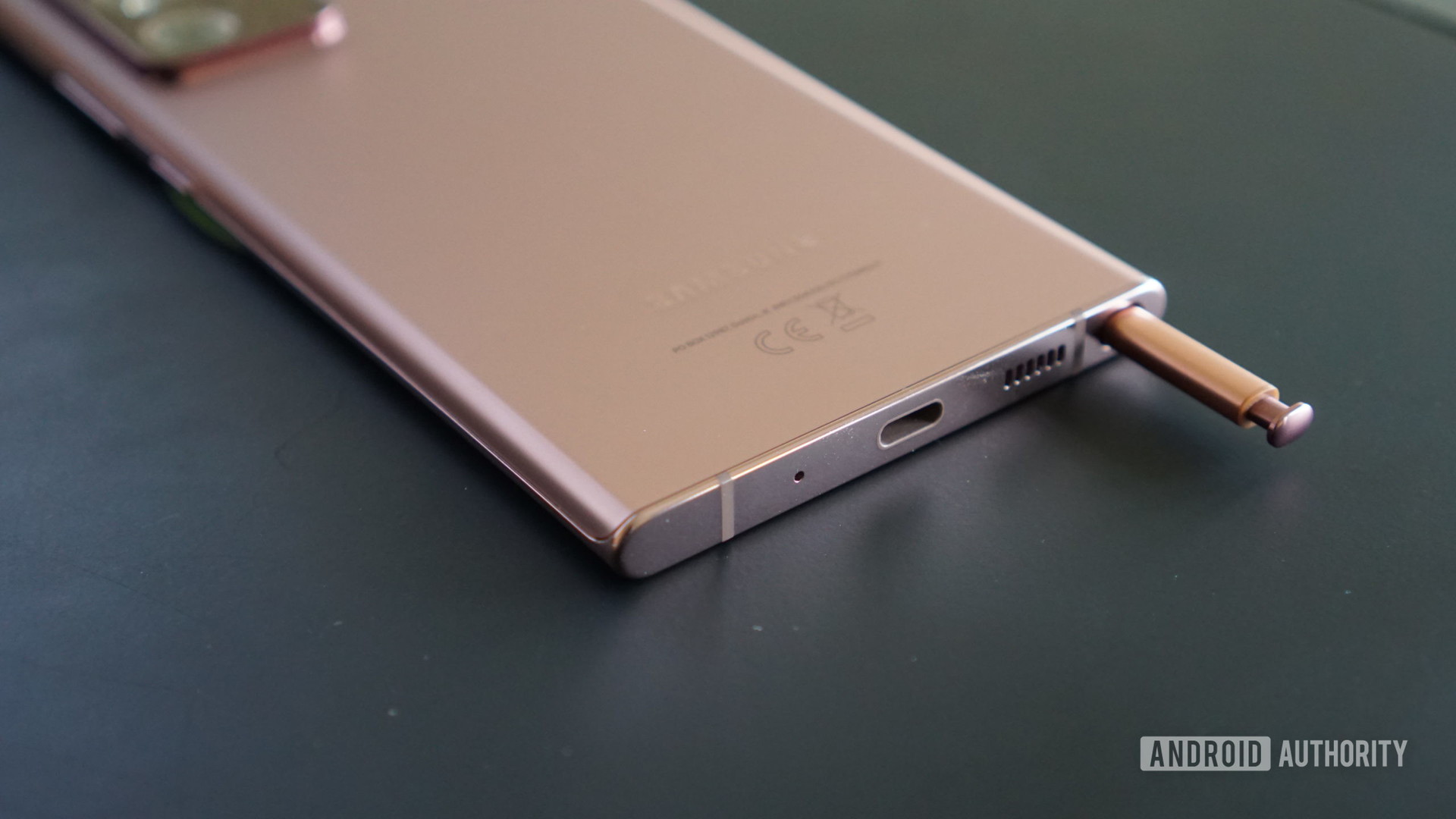
It must be said that the S Pen support here is still the best you’ll get on any recent Samsung phone, including the Galaxy S21 Ultra and Galaxy Z Fold 3. The fact that you’ve got a dedicated slot for the stylus is obviously more convenient, for starters. Then there’s the Bluetooth connection here (missing from the standard S Pens seen on the other devices), enabling a host of extra remote-like features.
The biggest downside to using the S Pen on the Note 20 Ultra is that it still feels way too cramped. For example, using the Samsung keyboard’s handwriting recognition to write messages is painful simply because there’s so little space available. It isn’t much better with the Samsung Notes app, either. It really feels like anyone wanting to comfortably write more than a short grocery list should probably get a Samsung tablet or the Galaxy Z Fold 3. It doesn’t help that the phone wobbles on a flat surface too, but more on that in a bit.
In fact, I’d argue that the real strength of the S Pen for most people is the remote functionality. Whether you’re using it as a remote shutter button while the phone is on a tripod, controlling media playback while your phone is connected to a big screen, or simply navigating through your device via accessibility features, it’s become a pretty versatile tool for non-writing tasks.
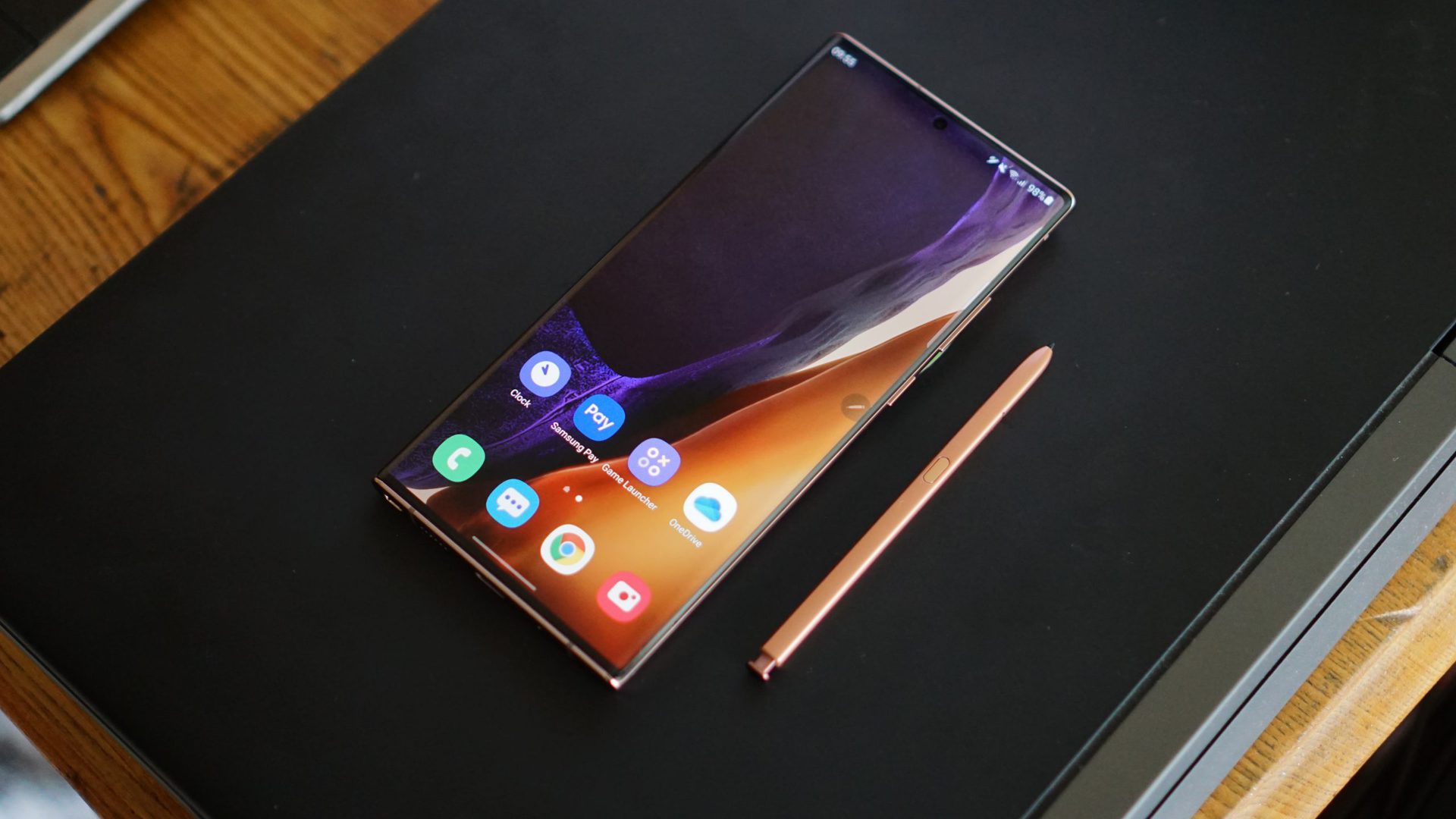
Special mention should go to the 120Hz QHD+ OLED screen, as it’s still gorgeous a year later. In saying so, the inability to run at the higher 120Hz refresh rate at QHD+ resolution was a minor oversight in 2020 and is a little glaring now. You’re still getting a high-quality display regardless, but having to choose between resolution and smoothness is a little disappointing when several 2020 and 2021 flagships let you have the best of both worlds.
Another rather interesting omission is that you can’t force 120Hz all the time. It’s an adaptive or 60Hz affair here. I get that the phone’s battery would likely run down in no time flat if 120Hz was on all the time (even for images and other similar content), but giving people the option is better than deciding for them. Even a 90Hz mode would be a good compromise between a high refresh rate and saving juice. Still, those looking for a slick, expansive screen will be right at home.
A premium, but tall design
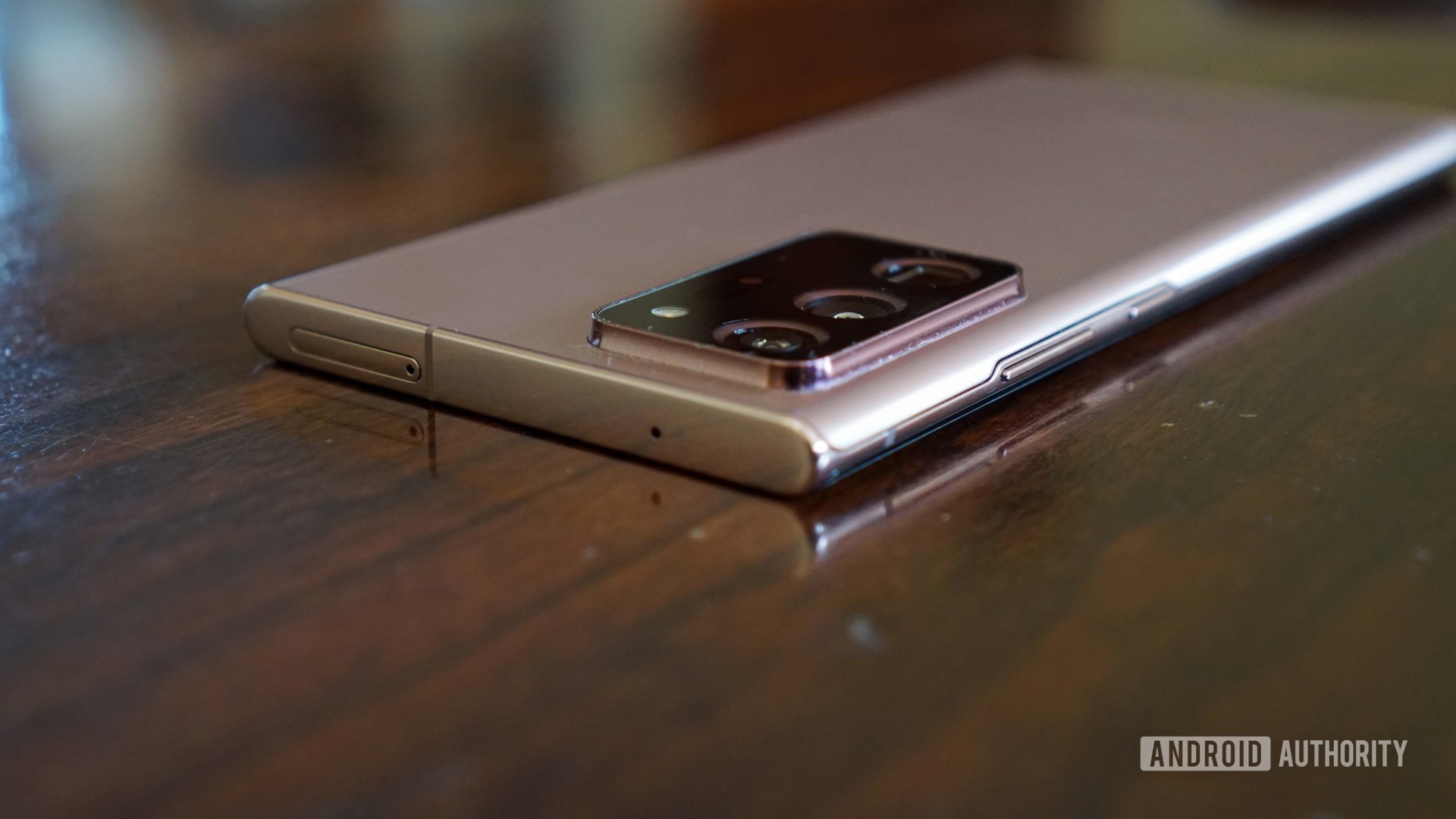
One of the best things about the Note 20 Ultra at launch was its design, and this remains true 12 months down the line. The flat, polished metal edges on the top and bottom and the metal frame in general both make the phone feel very sturdy yet premium. I don’t personally care for glass backs but it’s an expected feature for modern flagships, which is more than can be said for the standard Galaxy S21 and, notably (pun intended), the vanilla Galaxy Note 20.
There are, however, two design-related decisions that are still a bit tough to swallow after all this time. For one, there’s the sheer size of the phone. It isn’t quite as big as the LG V60, but it’s certainly close. This size and weight (208g) mean that the phone feels unwieldy at times, such as when you’re reading in bed. The Note 20 Ultra fits in my jeans pocket just fine, but those with tracksuit pockets and the like might want to watch out.
See also: The best Samsung Galaxy Note 20 Ultra cases you can get
The other lamentable design choice was the sizeable camera bump on the left side of the phone’s back. Camera bumps alone aren’t a problem for me, as I’m okay with a little protrusion if the cameras take great pictures. But the bump’s location means that the phone will definitely wobble anytime you tap your finger in the top-left quadrant of the display while the phone is flat on its back.
I’d rather see a large horizontal camera bump or Xiaomi’s phone-spanning housing on the Mi 11 Ultra. This way, you avoid the wobbling while still delivering great camera hardware. Hopefully, the Galaxy Note 22 (if it’s indeed in the works) addresses this issue.
What about the Note 20 Ultra camera experience?
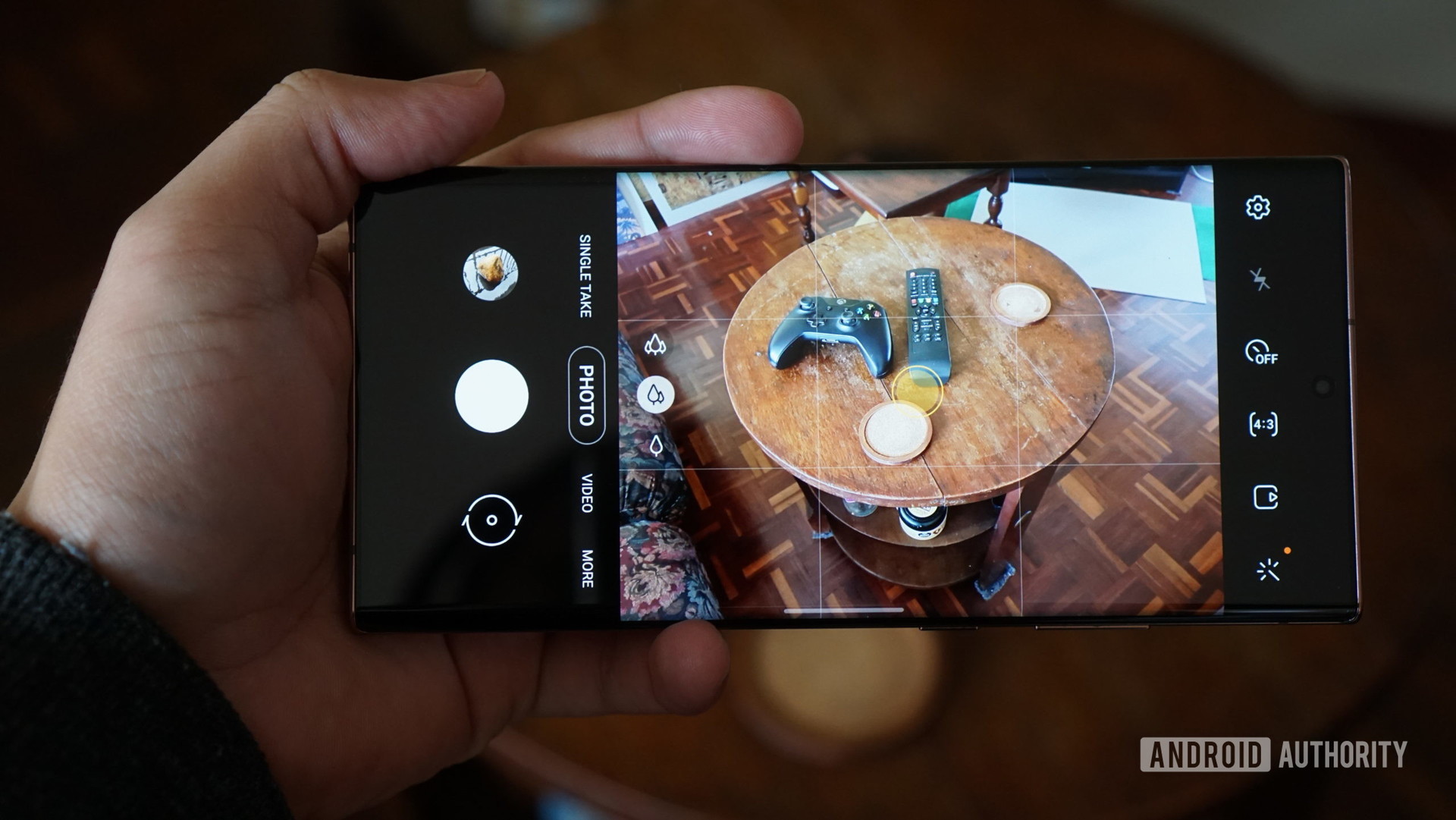
The Galaxy Note 20 Ultra shipped with a very flexible camera system in 2020, and it’s still a versatile experience a year later. In fact, you could argue that the combo of a 108MP main camera, 12MP ultra-wide lens, and 12MP 5x periscope camera is still better than some 2021 flagships.
Related: The best camera phones you can get
The 108MP camera was a bit of a mess on the Galaxy S20 Ultra owing to focusing issues, but the Note 20 Ultra does go some way to alleviating these problems. The addition of laser autofocus and in-camera prompts do give you a better opportunity to get a sharp shot that’s perfectly in focus. But the large sensor size results in a shallow depth-of-field, which can be great in some situations but also means that you’ll need to occasionally move the camera back a bit to keep things sharp.
Images are shot at 12MP via the main camera and are generally detailed during the day, usually taking a slight turn towards the saturated look. The colors are also consistent between all three cameras, which isn’t always a given on other phones. Check out the gallery below for a selection of shots.
The only real downside to the primary camera (and in general) compared to more recent devices is that it can falter a little in certain backlit HDR scenes. You can note this discrepancy in the image comparison below, showing the Note 20 Ultra versus the vivo X60 Pro Plus. The Samsung phone definitely features more detail on the Lego model (I tapped to focus on it after all) but it comes at the expense of a blown-out background. This doesn’t happen often at all though, and the phone still prioritized what I tapped on in the first place, but it would’ve been cool to see the background tamed a bit.
You can also shoot at the full 108MP resolution too, and this can make a notable difference to resolvable detail in ideal conditions. So those who love to crop and pixel-peep photos after the fact will want to give this a try. However, darker parts of the scene can see more noise. You also lose out on the ability to take super-fast burst shots, but the shot-to-shot delay of up to two seconds isn’t awful given the demands on the hardware.
The Galaxy Note 20 Ultra is still a very capable camera platform one year down the line.
It’s also worth noting that the phone’s night mode is a pretty transformative affair in almost absolute darkness, but it generally doesn’t go overboard like other OEMs when it comes to the brightness of the scene overall. Samsung also does a well-balanced job of noise reduction in these situations, removing grain without smearing away details.
Moving away from the primary camera, the 5x periscope camera remains a top-notch shooter today as well. You’re getting a healthy amount of resolvable detail in good lighting when shooting at 5x and 6x, allowing you to crop in a little more if need be. Detail remains decent provided that you steer clear of anything above 10x for the most part. Move beyond this and things start to resemble a messy oil painting, with no detail, blurry edges, and blown-out whites.
The ultra-wide camera is perhaps the one area where Samsung is lagging behind on paper in 2021. It’s still a pretty great wide-angle snapper, but the lack of autofocus is a little disappointing today. This omission means you lose out on macro shots via this camera as well as some flexibility in terms of focusing — tapping elsewhere on the screen only changes the exposure.
In terms of video quality, Samsung has generally been at the head of the Android pack in delivering a polished experience. The Note 20 Ultra still delivers a full-featured experience in this regard, offering 8K/24fps video recording, Super Steady stabilization, 120fps slow motion, 960fps super slow motion (interpolated from 480fps), and more.
It’s not all cutting-edge for video though, as Super Steady video still produces the jelly effect in more demanding scenarios, while 120fps video doesn’t quite reach the 4K heights of modern rivals like the OnePlus 9 Pro or Sony Xperia 1 III. But the fundamental experience is still great in 2021.
Some minor annoyances
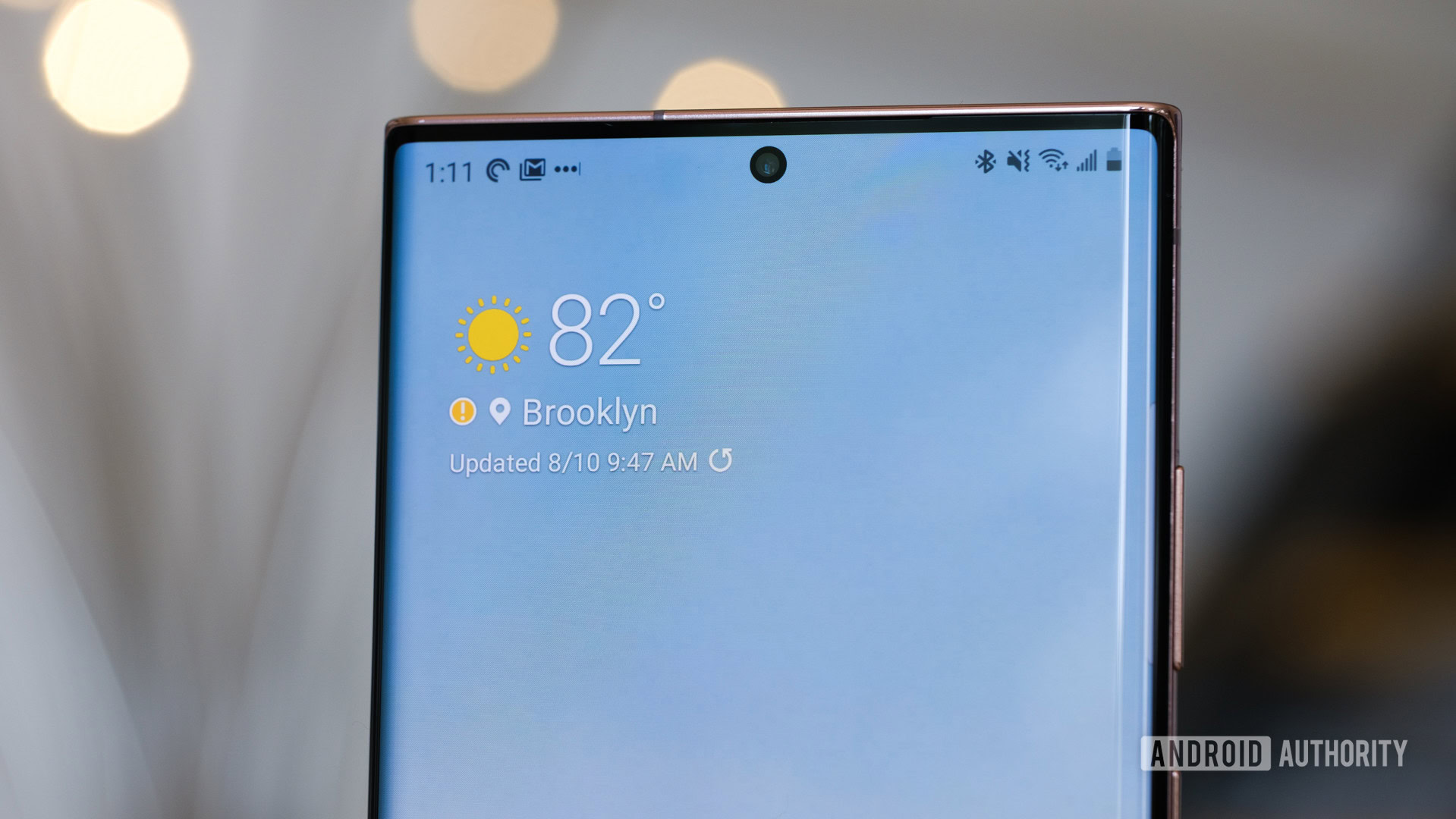
Samsung’s latest Note smartphone has held up pretty well so far then. But there are definitely a few areas for improvement that bothered me during my testing.
The fingerprint scanner isn’t great
The Note 20 Ultra’s in-display fingerprint sensor isn’t the best experience around. There were quite a few times when the phone refused to unlock with my print. It works far more often than not and it’s fast enough when it does work, but the failed unlocks occur just enough to be a little annoying.
It doesn’t help that Samsung makes unlocking the phone a bit of a chore out of the box. You generally have to interact with the screen or hit the power button to get the fingerprint icon to show, unless you have the always-on display enabled. Don’t have the always-on display active? Then you’ll need to enable the lift-to-wake gesture instead. Why not enable this option out of the box or something similar? To be fair, you can still scan your finger without the fingerprint icon appearing on the screen, but you need to know precisely where to place your finger.
One UI can be confusing out of the box
Samsung’s skin definitely has a few questionable default behaviors for anyone coming from a different phone brand. For one, the power button activates Bixby by default. I’m really not a fan of assistants being tied to the power button at the expense of all power-related functionality — so that was one of the first settings I changed. Another annoyance for anyone coming from a non-Samsung brand is that you can’t set Google Discover as your left-most screen within the default launcher, something that you can do on later Samsung phones.
Read more: Everything you need to know about One UI
One more default choice I hate in One UI is the fact that an upward swipe from a UI element at the bottom of the screen launches Samsung Pay. This makes for a frustrating experience if you’re using gesture navigation and it’s another feature I quickly disabled.
Finally, performing the back gesture sometimes activates the Edge Panel instead. This is because the gesture doesn’t apply to the top-right side of the screen near the Edge Panel, forcing you to use the top-left side or the lower half of the screen. This limitation is understandable, but the sheer size of the phone means that you aren’t always going to be holding it by the bottom half.
Charging wasn’t fast in 2020, and it’s slower now
The Galaxy Note 20 Ultra offers 25W charging speeds, topping up in roughly 75 minutes in my own experience. Eric, on the other hand, noted a top-up time of 70 minutes. Either way, even a 50 to 60 minute charging time would’ve significantly narrowed the gap to rivals without sacrificing battery health too much. After all, sub-one-hour charging times have been a thing for at least two or three years now.
Samsung Galaxy Note 20 Ultra long-term review: The verdict
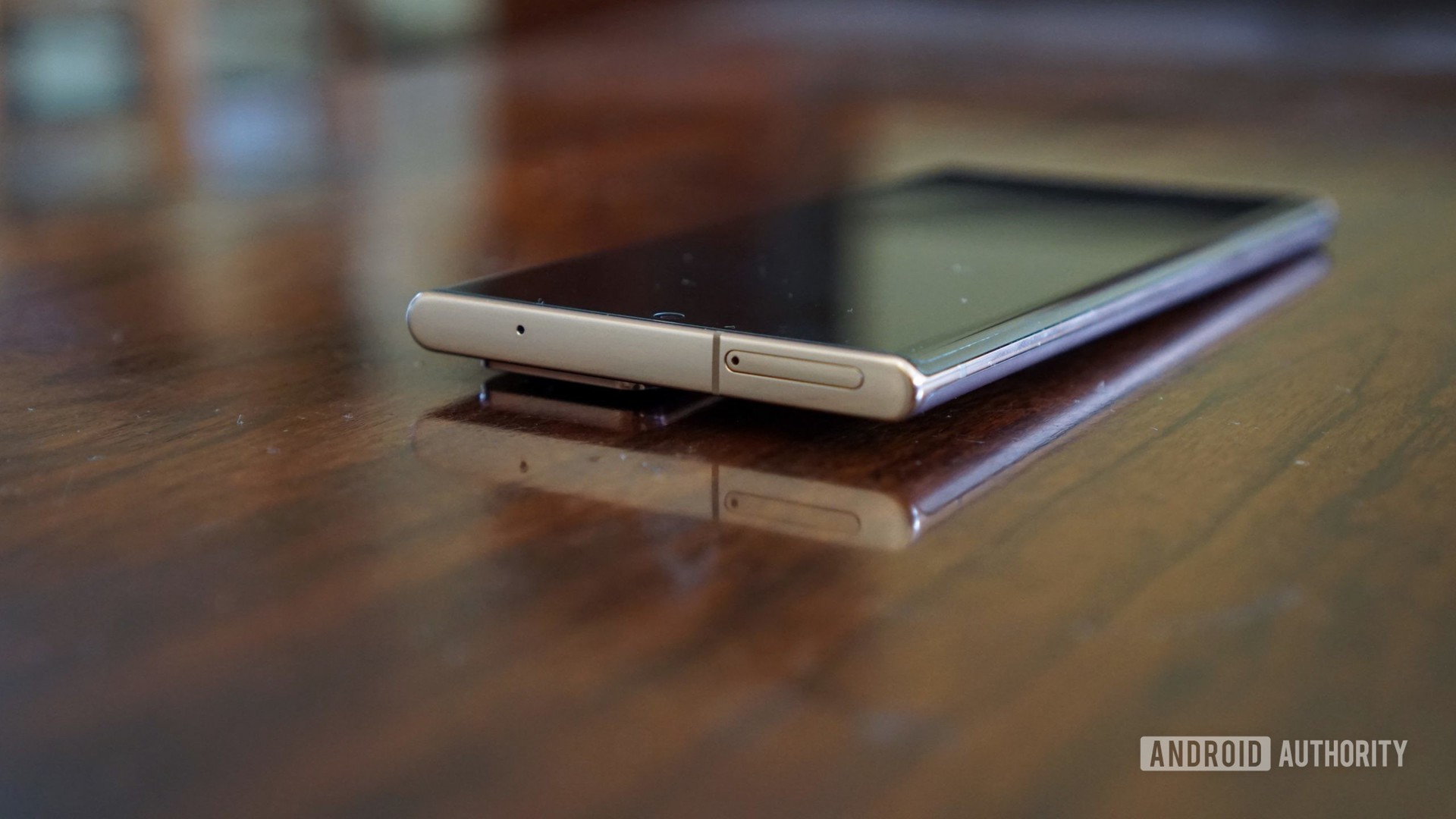
The Galaxy Note 20 Ultra was priced at a rather eye-watering $1,300 at launch, although it was still $100 cheaper than the Galaxy S20 Ultra. Samsung’s late 2020 phone has since seen a discount to around the $950 mark, making it worth a look if you value the S Pen experience in a premium flagship. Features like water resistance, wireless charging, a periscope camera, a high refresh rate OLED screen, and three years of OS updates round out a great phone that’s still mostly great a year later.
Samsung Galaxy Note 20 Ultra one year later: Should you still buy it?
Should you actually buy it in 2021 though? Well, if you don’t care for the S Pen slot or microSD expansion then the Galaxy S21 Ultra is a no-brainer over the Note 20 Ultra. Samsung’s early 2021 flagship retails for ~$1,000 on the likes of Amazon these days, offering water resistance, wireless charging, a high refresh rate OLED, and three years of OS updates too. It also brings a few improvements like 120Hz at QHD+ resolution, two telephoto cameras, a bigger battery, and a faster chipset. And the S Pen support is still welcome, even if storing it is another matter altogether.
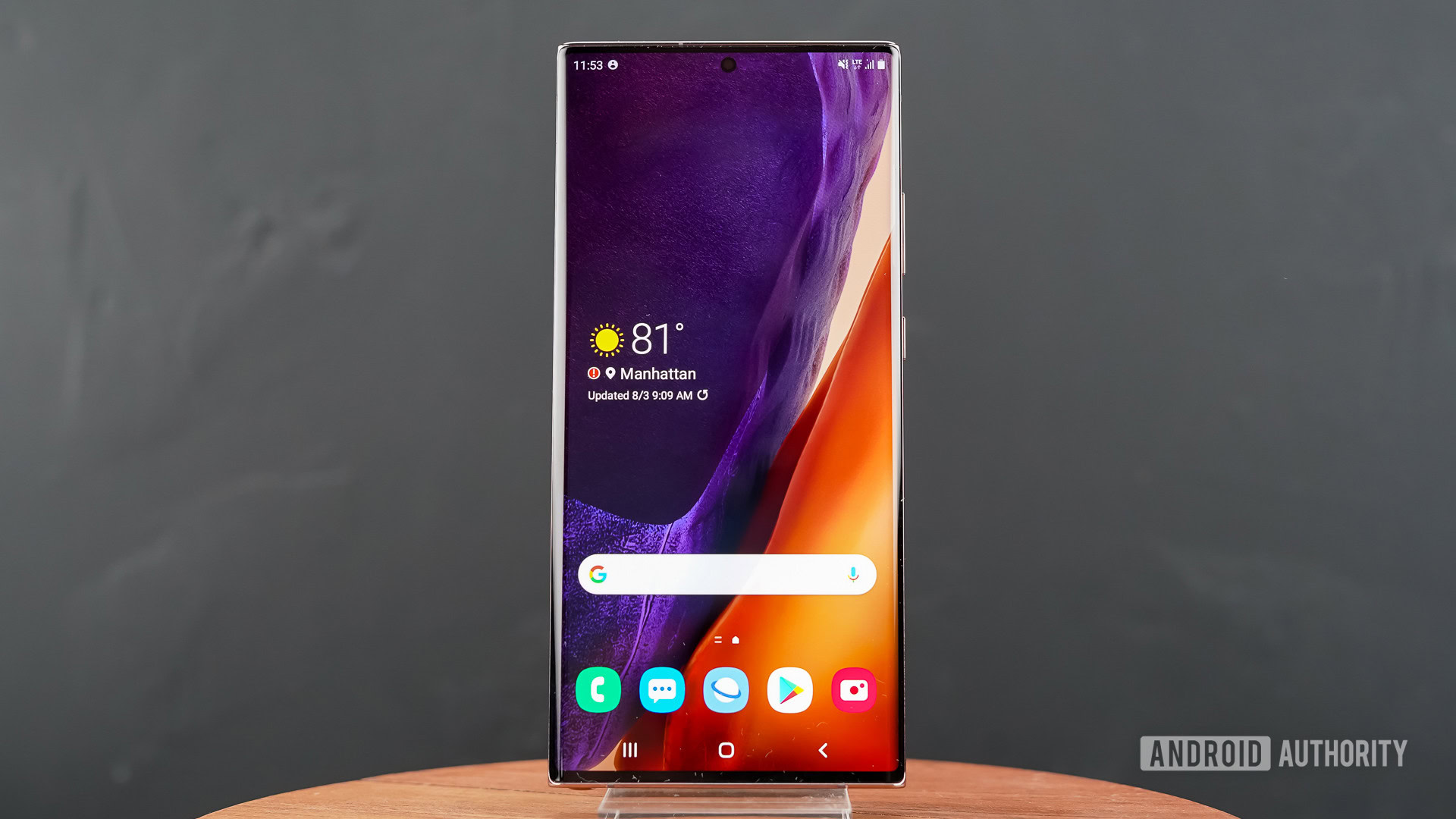
Do you think the Galaxy Note 20 Ultra is still worth buying a year later? Let us know in the poll above and in the comments.